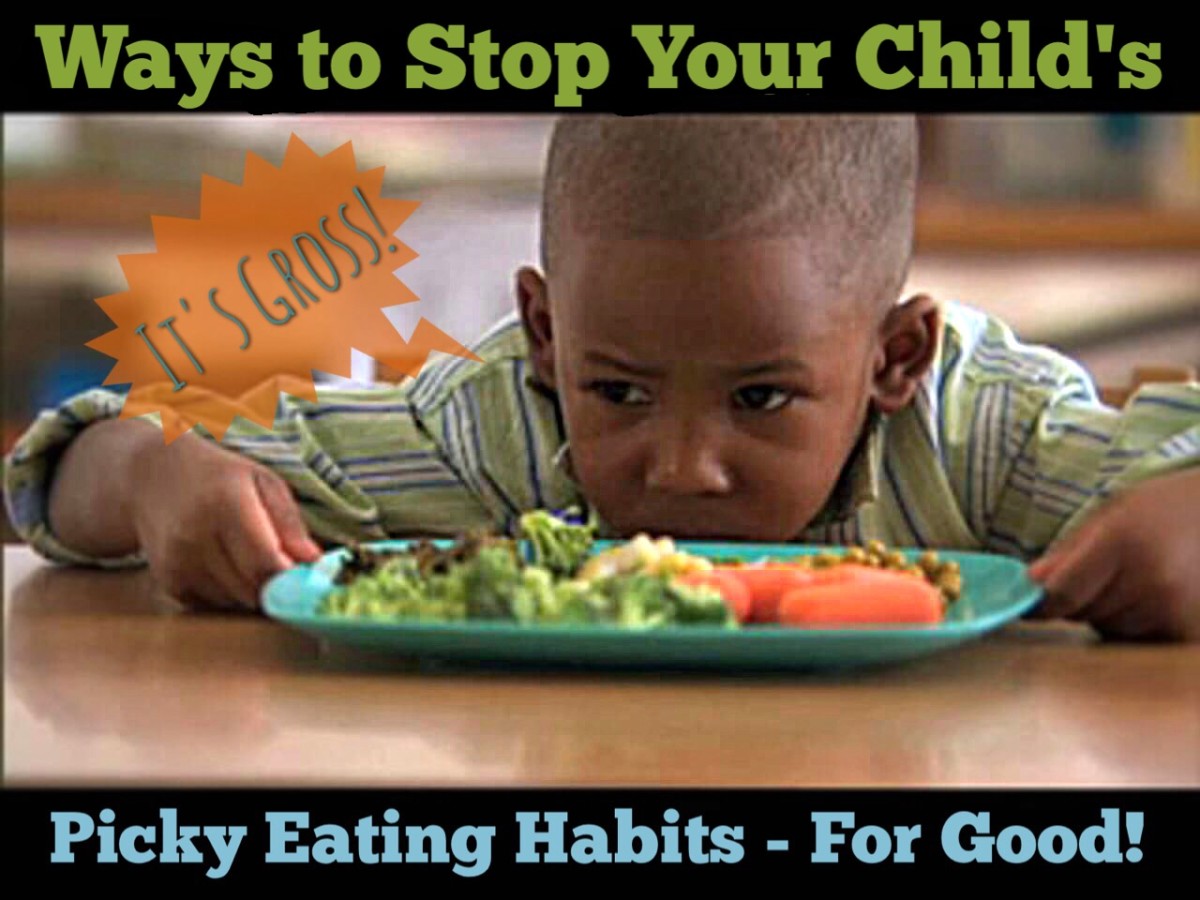
Picky eating advice on what parents should do is a crucial topic for parents facing the challenge of getting their children to eat a variety of foods. This guide dives deep into understanding the complexities of picky eating, from its causes and manifestations at different ages to effective strategies for parents to support their children’s healthy eating habits.
This comprehensive guide covers everything from defining picky eating and distinguishing it from normal food exploration phases to practical strategies for encouraging children to try new foods, manage mealtime challenges, and address underlying issues like sensory sensitivities and potential medical conditions. It also explores creating a supportive environment, incorporating food exploration activities, and long-term management strategies.
Understanding Picky Eating

Picky eating, a common concern for parents, often leads to frustration and anxiety. It’s important to understand that picky eating isn’t necessarily a sign of a problem, but rather a stage of development. Many children experience phases of rejecting certain foods, and understanding the reasons behind this behavior is key to supporting them. This stage often coincides with exploration of taste and texture, which is a normal part of a child’s development.A deeper understanding of picky eating requires separating it from other potential feeding issues.
While the lines can blur, picky eating typically involves a limited range of foods a child will accept, often exhibiting specific behaviors and patterns. Understanding these patterns allows parents to address the issue effectively and prevent it from escalating into a more significant problem.
Defining Picky Eating
Picky eating is characterized by a restricted food intake, often accompanied by avoidance of new or unfamiliar foods. This is different from the normal exploration phase where children naturally experiment with different tastes and textures. Children in this phase might show hesitancy towards new foods but ultimately try them, whereas picky eaters have a persistent refusal to try or eat a broad range of foods.
This avoidance often extends to entire food groups, leading to dietary imbalances.
Typical Behaviors Associated with Picky Eating
Children with picky eating habits often exhibit specific behaviors. They might:
- Refuse to try new foods, even if presented in appealing ways.
- Express strong preferences for a limited number of foods, often simple or familiar ones.
- Focus on the appearance, texture, or smell of food, rejecting those that don’t meet their criteria.
- Have specific demands about how food is prepared, such as needing it cut into certain shapes or cooked in particular ways.
- Be overly sensitive to food textures, flavors, or temperatures.
- Exhibit extreme reactions like gagging, spitting, or crying when confronted with unfamiliar foods.
Specific examples of foods children might reject include vegetables (especially leafy greens and broccoli), certain fruits (like berries or citrus), and various meats (like fish or poultry). This can lead to a significant nutritional gap, which needs to be addressed.
Dealing with picky eaters can be tough, but one key strategy is offering a variety of healthy options. This often involves incorporating a range of textures and flavors, and understanding that kids (and adults!) sometimes need repeated exposure to new foods. It’s also important to remember that refrigerators play a crucial role in managing diabetes, by allowing people to store and access their medications and special diet foods properly ( why refrigerators are an important necessity for people with diabetes ).
Ultimately, parents should focus on making healthy eating enjoyable and not a battleground. Presenting food in an attractive way and involving kids in the preparation process can make a big difference.
Developmental Stages and Picky Eating
Food preferences are influenced by developmental stages. Infancy sees a focus on familiar tastes and textures. Toddlers often have a desire for repetition and familiar foods, which can extend to picky eating behaviors. Preschoolers might have a more developed sense of self and autonomy, which can lead to more intense food refusal. School-aged children often face peer influence, which can impact their food choices.
Potential Causes of Picky Eating
Picky eating can stem from various factors. Biological factors like taste receptors or digestive sensitivities can influence a child’s preferences. Environmental factors, such as family eating habits, exposure to food models, and cultural influences, also play a significant role. Experiences with food, like a negative association with a particular food, can lead to persistent rejection.
Comparing Picky Eating to Related Feeding Issues
| Characteristic | Picky Eating | Food Aversions | Sensory Sensitivities |
|---|---|---|---|
| Food Avoidance | Limited food choices, often based on appearance, texture, or taste. | Strong dislike for specific foods, often due to a negative experience. | Food rejection due to sensory characteristics like taste, smell, or texture. |
| Impact | Nutritional imbalances, potential for weight issues. | Can affect nutrition if not addressed. | Can lead to difficulties with eating, impacting social interactions. |
| Causes | Often a developmental stage, influenced by environment and genetics. | Often related to a specific negative experience. | Often related to a neurological or sensory processing difference. |
This table highlights the key differences between picky eating, food aversions, and sensory sensitivities, offering a more comprehensive understanding of the potential contributing factors to feeding issues.
Strategies for Parents

Helping your child embrace new foods can be a journey, not a race. Understanding that picky eating is often a phase, and that every child develops at their own pace, is crucial. This phase is often characterized by a reluctance to try new things, which can be frustrating for both parents and children. However, with patience, positive reinforcement, and a well-structured approach, you can guide your child toward a more open and adventurous palate.This section delves into practical strategies for parents, offering techniques to encourage a love for a variety of foods, manage mealtime challenges, and address potential sensory sensitivities.
We will cover positive reinforcement, gradual exposure, and strategies for managing mealtime resistance, including tantrums.
Encouraging Acceptance Through Positive Reinforcement
Positive reinforcement is a powerful tool for shaping behavior. Instead of focusing on what your childisn’t* eating, acknowledge and praise their willingness to try new foods, even small bites. Rewarding attempts, rather than achievements, builds confidence and a positive association with trying new things. This could involve verbal praise, small rewards, or special privileges. For example, if your child takes a small bite of broccoli, acknowledge it with a “Wow, you tried broccoli! That’s great!” This approach fosters a positive emotional response to the food.
So, you’re dealing with a picky eater? It’s tough, right? Sometimes, parents might feel like they’re battling an uphill battle, especially when faced with the pressure of figuring out if a child’s dietary choices are truly just picky eating or if there’s a deeper, underlying issue. But, keep in mind that a significant portion of at-home genetic tests for food sensitivities show false positives, at around 40 percent, which can be misleading.
40 percent at home genetic test results false positives Ultimately, focus on offering a variety of healthy foods, and don’t let a potential false positive from a home test lead you astray from established nutritional guidelines and common sense. Building a healthy relationship with food is key.
Managing Mealtime Challenges
Mealtimes can sometimes be fraught with resistance and tantrums. It’s important to remain calm and avoid power struggles. Setting clear expectations, establishing a consistent routine, and providing choices within mealtime can help reduce conflict. For example, you could offer two healthy options, allowing the child to choose one, thus giving a sense of control. Avoid pressuring your child to eat everything on their plate.
Focus on creating a relaxed and positive atmosphere, making mealtimes enjoyable experiences.
Addressing Sensory Sensitivities
Sensory sensitivities can significantly impact a child’s willingness to try new foods. Understanding the child’s sensory preferences is key to introducing new foods. Consider the texture, taste, and smell. If your child dislikes a certain texture, present the food in a different form (e.g., pureed or mashed). Gradually introduce the desired texture over time.
Similarly, if a smell is overwhelming, try introducing the food in a different way (e.g., offering it in a different dish, or after they have already eaten something else).
Different Approaches to Picky Eating
| Approach | Description | Example |
|---|---|---|
| Reward Systems | Offering small rewards for trying new foods. | A sticker chart for each new food tried. |
| Distraction Techniques | Using distractions to divert attention from mealtime challenges. | Playing a game while eating, or having a conversation. |
| Positive Role Modeling | Demonstrating a positive attitude towards a wide variety of foods. | Eating different foods in front of the child, and talking about the enjoyment of various tastes. |
Introducing New Foods: A Step-by-Step Guide
Introducing new foods gradually is crucial. Start by offering small portions and reintroducing the food over several days. Don’t force the child to eat the new food. If they don’t want to eat it, don’t make a big deal out of it. The key is consistency and patience.
Remember, it’s a process, and some children may take longer to adjust.
- Introduction: Offer a small portion of the new food alongside familiar favorites.
- Reintroduction: Reintroduce the food after a few days, or even a week. Do this several times.
- Consistency: Keep offering the new food consistently, even if it’s not immediately accepted.
- Patience: Allow sufficient time for your child to adjust to the new food.
Creating a Supportive Environment: Picky Eating Advice On What Parents Should Do
Nurturing a positive and encouraging environment around mealtimes is crucial for fostering healthy eating habits in children, regardless of their current eating preferences. A child’s relationship with food is deeply intertwined with their emotional and social well-being. By creating a supportive atmosphere, parents can help children feel comfortable trying new foods and develop a positive association with meals.A key aspect of creating a supportive environment is to avoid pressure and coercion.
Children should not feel pressured to eat everything on their plate or finish a meal. Instead, focus on creating a relaxed and enjoyable atmosphere where exploration and experimentation are encouraged. This approach fosters a positive association with food, rather than creating a stressful or negative one.
Sometimes, picky eating feels like a battle, right? One thing parents can try is to make mealtimes fun and less stressful. A great way to understand your child’s relationship with food is by taking a quick quiz, like this one on sugar addiction quiz addicted to sugar. Understanding if there are underlying issues like sugar cravings might give you a better understanding of why your child is being picky.
Ultimately, patience and consistency are key when dealing with picky eaters. It’s a process, not a race!
Positive Mealtime Atmosphere
A relaxed and enjoyable mealtime environment is essential for encouraging children to try new foods without feeling overwhelmed or anxious. Establish a routine that prioritizes calm interactions and avoids distractions like screens or rushed schedules. Dim the lights, play soft music, and use pleasant tableware to set a pleasant tone.
Modeling Healthy Eating Habits
Children learn by observing their parents and caregivers. Demonstrating healthy eating habits, such as enjoying a variety of fruits, vegetables, and whole grains, sets a positive example for children. Parents should openly and enthusiastically share their own food choices, without making a big deal about their own preferences. Parents can use their own food choices as a teaching moment, such as explaining why they’re choosing a certain fruit or vegetable.
For example, a parent could explain how a particular fruit is a good source of vitamins.
Involving Children in Meal Preparation and Grocery Shopping
Involving children in the meal preparation process empowers them and increases their familiarity with various foods. Let children help with age-appropriate tasks, such as washing vegetables, setting the table, or choosing fruits and vegetables at the grocery store. This experience helps them understand where food comes from and encourages them to try new things. This active participation also fosters a sense of ownership and responsibility around food.
Addressing Family Dynamics
Family dynamics can significantly impact a child’s eating habits. Consider if other family members have specific dietary needs or preferences. If there are conflicts or disagreements around food, try to resolve these issues calmly and openly, finding compromises and solutions that work for everyone. Open communication about everyone’s needs and preferences is key.
Making Mealtimes Engaging
Mealtimes can be transformed into fun and interactive experiences. Incorporate games or activities to make mealtimes more enjoyable. Use creative presentation techniques to make vegetables more appealing. For instance, arranging vegetables into fun shapes or using colorful plates can spark interest. Also, consider telling stories or having conversations during mealtimes to create a pleasant atmosphere.
Addressing Underlying Issues
Sometimes, picky eating isn’t just about a child’s preferences; it can stem from underlying medical conditions, anxieties, or even allergies. Understanding these potential factors can help parents tailor their approach and ensure their child receives the necessary support. A holistic approach, combining dietary adjustments with strategies for emotional well-being, is often the most effective way to address the issue.A child’s reluctance to try new foods can be a complex issue with potential roots extending beyond simple preferences.
Addressing the underlying causes can unlock a more positive relationship with food and improve overall well-being. It’s crucial to remember that every child is different, and a collaborative approach with healthcare professionals is essential to create a personalized plan.
Potential Medical Conditions
Medical conditions can significantly impact a child’s appetite and food choices. Identifying these conditions early can make a substantial difference in a child’s health and development. A thorough evaluation by a pediatrician is crucial to rule out any underlying medical issues.
- Gastrointestinal issues, such as reflux or irritable bowel syndrome (IBS), can make certain foods uncomfortable or painful. This discomfort can lead to a child avoiding those foods altogether. For example, a child experiencing frequent heartburn might associate certain foods with the pain, leading them to reject those foods. Similarly, a child with IBS might develop a negative association with foods that trigger symptoms like bloating or gas.
- Food allergies and intolerances can manifest as various symptoms, including digestive issues, skin rashes, or even respiratory problems. This can create a strong negative association with specific foods, making the child hesitant to try them again. For instance, a child with a milk allergy might have difficulty digesting milk products and develop discomfort, prompting them to avoid them.
- Certain metabolic disorders can impact nutrient absorption, leading to decreased appetite and changes in food preferences. This can be observed in children with conditions such as phenylketonuria (PKU) or cystic fibrosis. For instance, a child with PKU might avoid protein-rich foods due to the body’s inability to process them correctly.
Stress and Anxiety
Stress and anxiety can significantly impact a child’s appetite and overall well-being. Mealtimes can become a source of anxiety if the child feels pressured or judged. Creating a supportive and relaxed atmosphere is essential for fostering a positive association with food.
- Stress can decrease appetite, leading to a child’s avoidance of food. This is particularly true for children experiencing significant life changes or stress. For example, a child facing a major transition like a move or a change in school might lose their appetite as a result of the stress.
- Anxiety can also cause discomfort during mealtimes, potentially leading to picky eating. Children who feel anxious about food or mealtimes might exhibit avoidance behaviors. For example, a child who experiences anxiety related to social situations might avoid eating in front of others, leading to picky eating habits.
- Strategies for managing stress and anxiety around mealtimes include creating a calm and relaxed environment, avoiding pressure or judgment, and encouraging positive associations with food. This could involve making mealtimes a social occasion, using positive reinforcement, and ensuring a positive atmosphere where the child feels comfortable.
Food Allergies and Intolerances
Food allergies and intolerances can significantly impact a child’s food choices and overall health. It’s crucial to approach these issues with caution and involve healthcare professionals for diagnosis and management.
- Food allergies can cause severe reactions, ranging from mild discomfort to life-threatening anaphylaxis. Identifying and managing food allergies is critical to ensuring a child’s safety. For instance, a child with a peanut allergy might experience a severe reaction after consuming peanut butter.
- Food intolerances, while less severe than allergies, can still cause discomfort and affect a child’s appetite. For example, a child with lactose intolerance might experience bloating and discomfort after consuming dairy products.
- Working closely with an allergist or pediatrician can help determine the appropriate course of action, including identifying the specific allergens or intolerances and implementing strategies for managing them. For instance, an allergist can perform tests and identify the specific food triggers for a child’s allergic reactions.
Common Medical Conditions and Their Impact
| Medical Condition | Potential Impact on Food Preferences |
|---|---|
| Gastroesophageal Reflux Disease (GERD) | Avoidance of certain foods that trigger heartburn or discomfort |
| Irritable Bowel Syndrome (IBS) | Avoidance of foods that cause bloating, gas, or other digestive issues |
| Phenylketonuria (PKU) | Avoidance of foods high in phenylalanine, a necessary amino acid |
| Cystic Fibrosis | Decreased appetite and potential nutrient deficiencies, leading to picky eating behaviors |
| Food Allergies | Avoidance of specific allergenic foods; potential for severe reactions |
| Food Intolerances | Avoidance of specific food groups or components; potential discomfort |
Long-Term Management
Navigating picky eating isn’t a sprint; it’s a marathon. While short-term strategies can help, long-term success hinges on building sustainable habits and a positive relationship with food. This involves more than just mealtimes; it encompasses the entire family dynamic and a commitment to consistent support. Consistency is key to breaking cycles and fostering a love for a wider variety of foods.Picky eating often persists beyond childhood, potentially impacting overall health and well-being.
Proactive long-term strategies are crucial to empower children to embrace a diverse diet. This phase requires a shift from focusing on “getting them to eat” to fostering a positive and supportive environment around food.
Maintaining Healthy Eating Habits Over Time
Establishing a positive relationship with food requires consistent effort and understanding. It’s not about forcing children to eat specific foods, but about creating an environment where trying new things feels safe and enjoyable. This involves creating opportunities for exploration and choice within healthy boundaries. Parents should strive to create a relaxed atmosphere during mealtimes, avoiding pressure or power struggles.
A positive experience around food can greatly influence long-term dietary habits.
Importance of Consistency and Long-Term Support
Consistency is paramount. Children thrive on routine and predictability, and this applies to mealtimes as well. Establishing consistent mealtimes and food presentation strategies can help children become accustomed to new foods and flavors. A supportive environment, free from food-related stress, fosters a sense of security around eating. This support extends beyond mealtimes to encompass activities that promote healthy eating habits in other contexts.
For instance, involving children in grocery shopping or meal preparation can instill a sense of ownership and encourage experimentation.
Strategies for Building a Positive Relationship with Food, Picky eating advice on what parents should do
Creating a positive relationship with food involves a multifaceted approach. Avoid using food as a reward or punishment. Instead, focus on creating positive associations with eating. Making mealtimes enjoyable and relaxed, involving children in meal preparation, and allowing for choices within healthy boundaries can significantly impact their relationship with food. Encouraging exploration, not perfection, is crucial.
Let children sample new foods without pressure and acknowledge their efforts, not just their results.
Role of Nutritionists and Therapists
Nutritionists play a vital role in providing personalized dietary guidance. They can help assess individual nutritional needs and create meal plans tailored to picky eaters’ preferences and dietary restrictions. Therapists can address underlying emotional or behavioral issues that might contribute to picky eating. They can provide strategies for managing stress, anxiety, and other factors impacting food choices.
A collaborative approach, involving nutritionists, therapists, and parents, can create a comprehensive support system for families.
Resources for Parents Facing Picky Eating Challenges
- Books: Numerous books offer practical strategies and insights into understanding and managing picky eating. Look for titles focusing on behavior modification techniques, positive reinforcement, and creating a supportive environment around food. Examples include “The Picky Eater” by registered dietitian Amy Goodman or “The No-More-Picky-Eater Plan” by Dr. Stephanie S. Scudder.
- Websites: Numerous websites provide valuable information, tips, and support groups for parents dealing with picky eating. Search for organizations specializing in child nutrition or parenting support. Some sites offer online communities and forums for sharing experiences and advice.
- Support Groups: Connecting with other parents facing similar challenges can offer invaluable support and practical advice. Look for local support groups or online forums dedicated to picky eating. Sharing experiences and learning from others can provide encouragement and a sense of community.
Food Exploration Activities
Helping picky eaters discover new foods is a journey, not a race. It’s about creating positive associations with food, fostering curiosity, and making mealtimes enjoyable experiences. A key component of this process involves engaging food exploration activities that go beyond simply placing food in front of a child. These activities should aim to make eating less intimidating and more exciting.Food exploration isn’t just about getting children to eat; it’s about developing a healthy relationship with food that lasts a lifetime.
This involves fostering a positive and playful attitude toward trying new things, breaking down barriers to accepting different textures and tastes, and building a foundation for a balanced diet. Sensory play with food, creative cooking, and age-appropriate activities can make a significant difference in this journey.
Sensory Play with Food
Sensory play with food allows children to interact with different food items in a non-threatening way. This can involve handling, smelling, and exploring the textures and colours of various foods. It’s a fantastic way to build familiarity and reduce anxiety about the unknown. For example, a child might enjoy exploring the different textures of cooked vegetables or the varied colours of berries.
This early interaction helps children develop a deeper understanding of what food is.
Making Food Fun and Less Intimidating
Turning mealtimes into fun adventures can significantly impact a child’s attitude toward trying new foods. Transforming ordinary meals into games, such as “guess the flavour,” or “find the hidden vegetables” can make the process more engaging. Use descriptive words to highlight the sensory experience, such as “the crunchy sound of the carrot,” or “the sweet taste of the strawberry.” Presenting food in visually appealing ways, like arranging colourful vegetables into fun shapes, can also make a difference.
Using fun plates, bowls, and utensils can also make the experience more exciting.
Age-Appropriate Activities for Introducing Various Food Groups
Introducing different food groups to children should be a gradual process, tailored to their developmental stage. Infants and toddlers might enjoy finger foods that allow them to explore different textures. Older children might be more receptive to interactive cooking activities, like measuring ingredients or preparing simple dishes.
- Infants (0-12 months): Focus on introducing purees and soft textures. Allow them to explore different tastes and textures through gentle sensory play. This might involve offering small pieces of soft fruits or vegetables in a play-based setting.
- Toddlers (1-3 years): Introduce finger foods and simple dishes. Encourage self-feeding and allow them to explore different tastes and textures independently, in a playful environment.
- Preschoolers (3-5 years): Involve them in simple cooking tasks, like washing vegetables or stirring ingredients. Introduce more complex foods and encourage discussion about different flavours and textures.
- School-aged children (6+ years): Engage them in more complex cooking activities and encourage them to explore different cuisines and cooking styles.
Age-Appropriate Food Textures and Tastes
Introducing new textures and tastes gradually and respectfully is essential. Children develop preferences for different textures and tastes at various ages.
| Age Group | Food Textures | Food Tastes | Introduction Strategies |
|---|---|---|---|
| Infants (0-6 months) | Smooth purees, soft mashed foods | Sweet, savory | Introduce one new food at a time, observe for allergies. |
| Toddlers (1-3 years) | Soft chunks, finger foods | Sweet, sour, salty, bitter | Incorporate foods into their favourite dishes, or introduce alongside familiar foods. |
| Preschoolers (3-5 years) | More varied textures | Various tastes | Involve them in cooking processes and let them choose foods. |
| School-aged (6+) | A wide range of textures | A wide range of tastes | Encourage exploration of new cuisines and food combinations. |
Creative Cooking and Meal Preparation
Incorporating creative cooking and meal preparation into family routines can significantly enhance the experience of trying new foods. Let children participate in age-appropriate tasks like washing vegetables, measuring ingredients, or stirring. This hands-on involvement fosters a sense of ownership and encourages a positive association with food.
“When children are involved in the cooking process, they are more likely to try the food they helped prepare.”
Allowing children to help choose the recipes and contribute to the meal planning process can further increase their enthusiasm. This is a fantastic opportunity to introduce diverse cuisines and cultural dishes, broadening their palates and promoting a healthy appreciation for different food traditions. For example, a family might try a new international dish or a vegetarian recipe together.
Conclusive Thoughts
Ultimately, the key to navigating picky eating lies in understanding the individual needs of each child and creating a supportive, encouraging environment around mealtimes. This guide equips parents with a toolbox of strategies to foster healthy eating habits and build a positive relationship with food. Remember, consistency and patience are key to long-term success.





